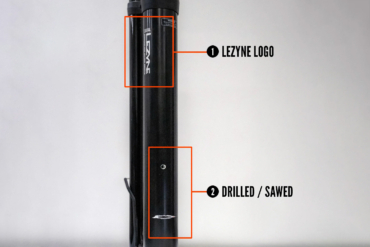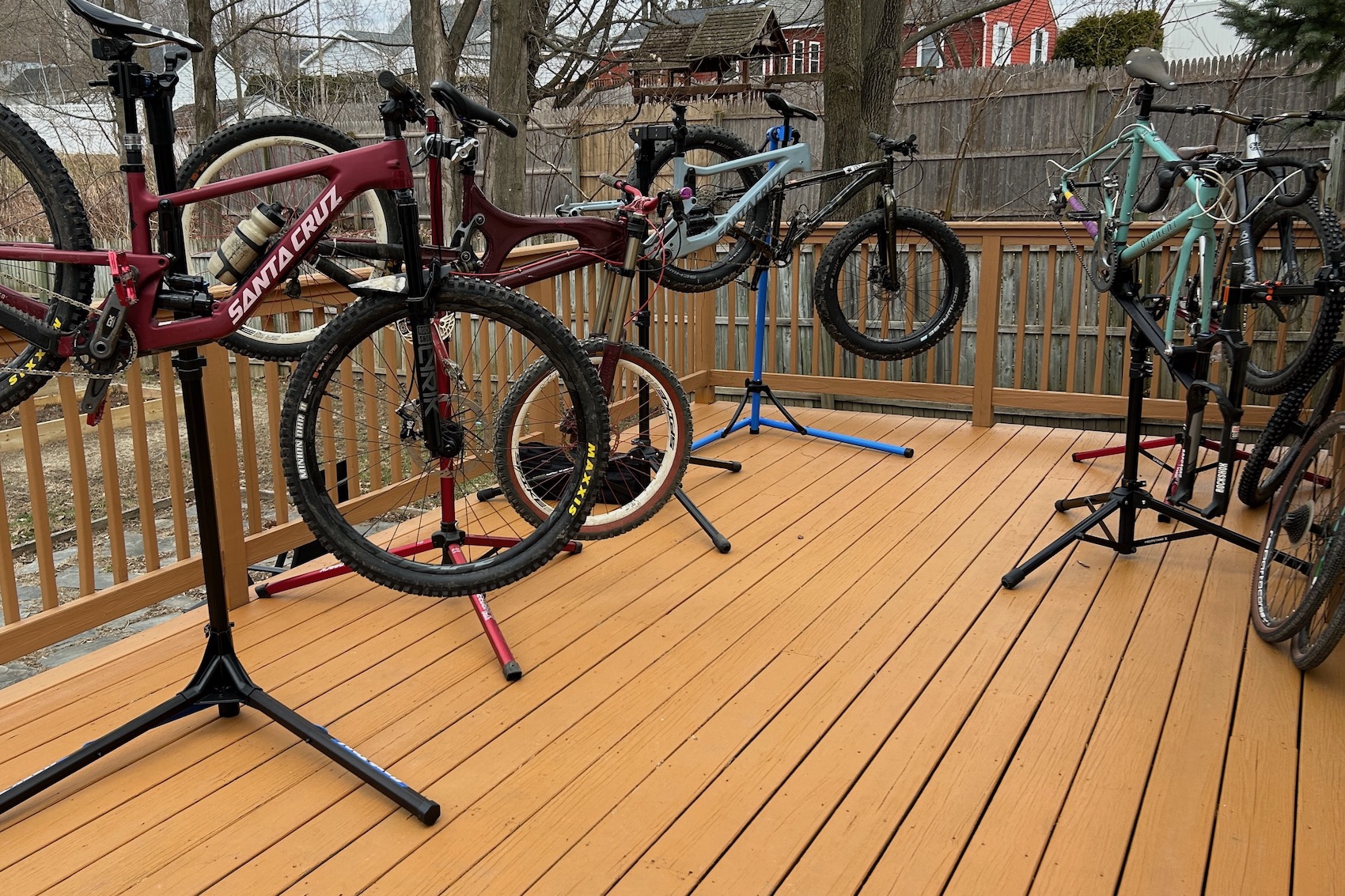Sean Martin, age 33, runs a popular cycling blog, Take Over LA, which chronicles fixed-gear racing and urban bike culture in the Los Angeles area. He’s an athlete with sponsors and is a regular fixture on the alleycat race scene, traveling to compete in the U.S. and further afield. Last month, in Indonesia, Martin won the main alleycat event at Fixed Fest 2012 in the urban density of downtown Jakarta, dodging cars and scooters that clogged the streets along the way. We caught up with Martin for a download on the Jakarta experience and an update on the alleycat scene domestically in LA and beyond. —Stephen Regenold
Gear Junkie: Congrats on the win! How did you take the top spot in an alleycat like this, a huge international event, without knowing the city?
Sean Martin: Thanks man, it was an amazing race through an amazing city. Nothing like racing an alleycat in Jakarta! Well, all of us out-of-towners stuck with one of the faster locals, Augy, and he had the best route through the city. We all really pushed the pace, worked together and kept up with him and got the job done. In the end there was a final checkpoint near the start and once we got that stamp, it became every man for himself and I got out in front of the group and handed in my manifest first for the win.
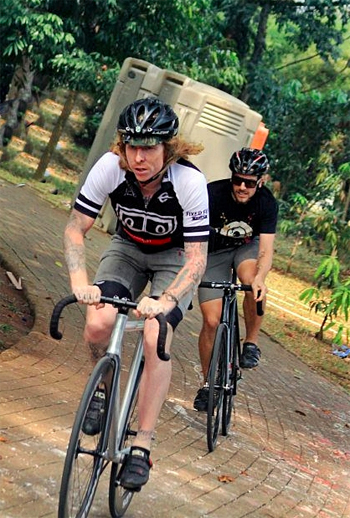
What bike were you on?
I was riding my Affinity Kissena track bike running a 48/15 gear ratio, Reynolds DV66c for wheels, Conti Super Sport+ for tires, SRAM Ominums for crankset, Thomson stem and seat post, Time ATAC mtb pedals and Fyxation Comet drops. Oh, and a pair of very well ridden in stinky Sidi Dom 5s. Best combo ever, Time ATAC to Sidis!
How is the alleycat scene different in Jakarta than in the U.S.?
There were really high-end track bikes and parts, things I wouldn’t really see being ridden in LA, let alone raced on in the streets. Other than that, the amount of racers is huge there. It was pretty rad to see hundreds of bikes set up Le Mans style for the start of the race.
Give us some details on the race.
It was seven checkpoints all over the city and in some of gnarliest traffic I have ridden in. Imagine racing in rush hour in LA or NYC and throw in a mass density of scooters. I believe it took us about an hour and a half give or take to finish, coming in around 20, 25 miles for distance.

Anything out of the ordinary happen during the race? What was the hardest part?
The start was hard, trying hard not to get separated from our local man Augy in such a huge mass start. Plus we spilled out into what was Jakarta’s car-free Sunday pedestrian area for the first couple of miles. From there it was dodging streets filled with slower riders, runners and walkers.
Can you comment on the current state of alleycat racing in the US versus international?
There are tons of races popping up all over the US in the last two years that we street racers are traveling for more now than ever. There always have been events in the larger Cities that messengers throw like QCR, Westside Invite, NACCCs, MonsterTrack and StuporBowl. But the popularity of fixed-gear bikes has really made everyone step up their event game, which gets us to travel. Plus, we are all friends and want to come visit our friends and race their events in their part of the country.
It seems like the races overseas or in different countries are larger and with bigger sponsors than we have over here. In the U.S., we get local brands and bike companies to sponsor the events, where as in Jakarta, for example, they have banks, airlines, cellphone companies, and their mainstream media all jumping on to sponsor the events. The sheer number of competitors and spectators that come out to these events overseas is mind blowing. All of this is a good thing, it encourages us stateside racers to get out there, go travel and race in foreign lands.
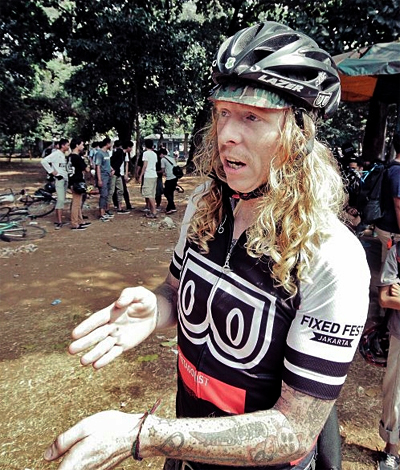
What’s changing in alleycat racing as of late? Here in Minneapolis, where GearJunkie is based, the scene is getting more “mainstream” with geared bikes and roadies and even mountain bikers joining in.
The main thing I notice in LA is more “pro” (Cat 1, Cat 2) racers coming out to certain events. I have no issue with this. It shows that the streets are getting more respect and, frankly, it shows that street racing is a hell of a lot more fun (better prizes, more beer!) than any sanctioned crit. On the flipside, it encourages us longtime alleycat racers to step up our game. Also, the new people help us make connections within the mainstream cycling world.
As well as all this, the younger guys who may do alleycats only meet these roadies and see that Lycra and gears aren’t that bad, and it gets them to change their perspective on racing bikes and perhaps seeking a career out of it.
The events are getting bigger and bigger as well. I remember a few years ago you might get 10 to 15 people out to race. Nowadays, most events have 30 – 50 or more racers as well as spectators, too. That is comparable to most sanctioned races.
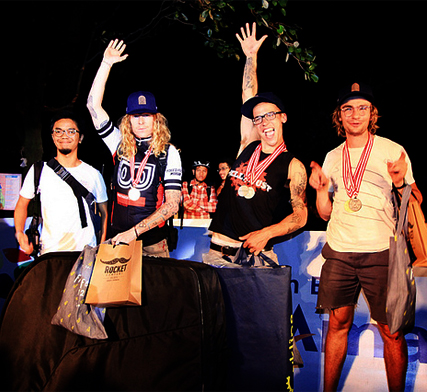
What makes for a perfect alleycat bike?
A brake-less track bike. Period. For me, it’s how I learned to race in streets and for lack of a better phrase, “it’s more pure.”
Why not have a brake on your fixie?
When I started riding a fixed-gear I had a brake. I always tell everyone you gotta learn to walk before you run. Eventually, I took it off and have never looked back. You just learn how to control your bike with your legs and for myself if I had a brake as a backup I would think that I would panic and use it in the wrong manner and probably crash.
What gearing do you recommend for a city like LA or Minneapolis or NYC (relatively flat) versus Seattle or San Fran?
The universal gearing that seems to get the most love no matter what city I am in is 47/17. A lot of heavy hitters I know race, ride, and/or work on that ratio. It depends on if you like to spin or how good of a climber you are and your ability to control the bike. I just found one that I was very comfortable with and stuck to it. I rode 48/17 when I lived in Seattle and when I bounced to LA I stuck with it.
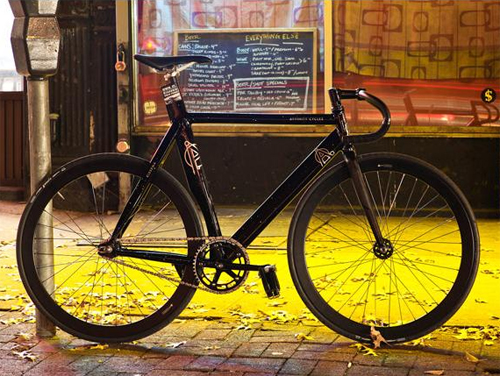
What track bike setups would you recommend for riders getting into this realm? Complete bike builds, too.
Tough. I would say anything Affinity cycles produces is a good place to start. Seriously, though, I learned through just riding. Get to know different bikes and parts and find out what fits for you. Sometimes the most expensive item doesn’t mean it’s the best. But Windsors, Meicers and State Bicycle Company completes are a great starting point for street bikes. Next level up is anything that Surly, Fuji, Bianchi, Cinelli, or All City produces. All of these brands I just listed are great complete builds and you wouldn’t really have to switch out components down the road, as they will last you. Above that level, for an even better or faster bike, it’s just buying higher-end framesets, custom frames, and high-end parts.
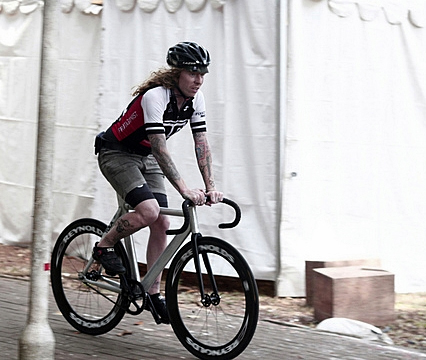
What does your alleycat schedule look like this year? How many races are you doing, and where are you traveling?
I have been traveling a lot this year. I was in Virginia for the NACCC, been racing in SF a ton, and will continue to go up there. Also Chicago, Malaysia, Las Vegas for the Interbike races, a bunch of local events in LA. . . been toying with Red Hook Milan and maybe heading to Puerto Rico for a crit there, too.
I also throw my own events in LA and need to get ready for those! Plus, I’m racing cyclocross for the first time this year. Gotta get that bike and ride some trails!
Where do you see this sport going? Where will it be in five years?
In five years I see that there will be huge street events like the X-Games, with us street racers being paid to travel. And there will be a sort of a professional league and governing body happening, but only if we keep this momentum going and work at making it more legit. On the other side of the coin, there will always be underground, off-the-radar street events thrown locally, which no one will hear of and will keep breeding the future racers of alleycat cycling.
—Martin would like to thank Albabici and its Sci’Con, Motorex and Sportique brands for support at the Jakarta event. Read more about alleycat racing on GearJunkie here and watch our video, “Stupor Bowl 2012,” which covers one of the biggest alleycat races in the U.S. each year.




